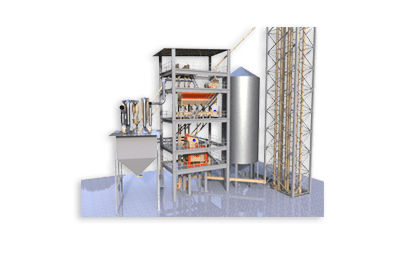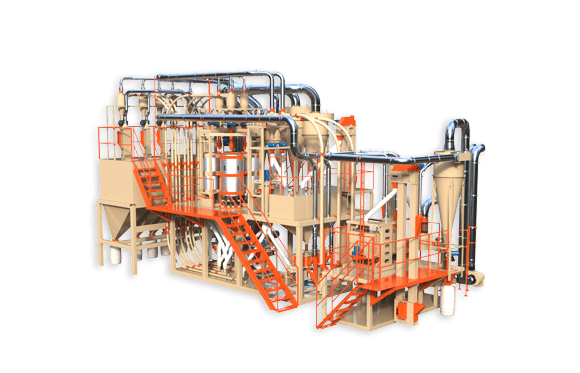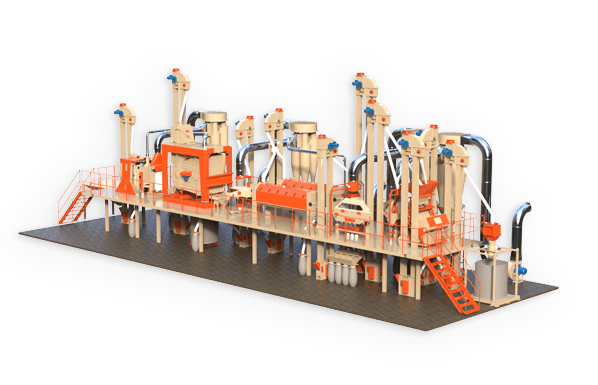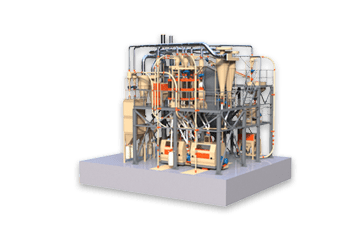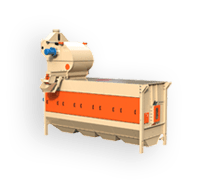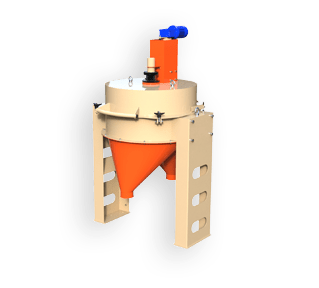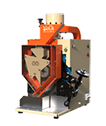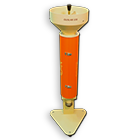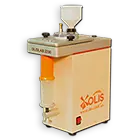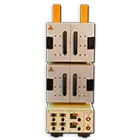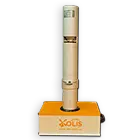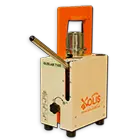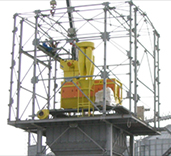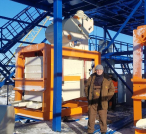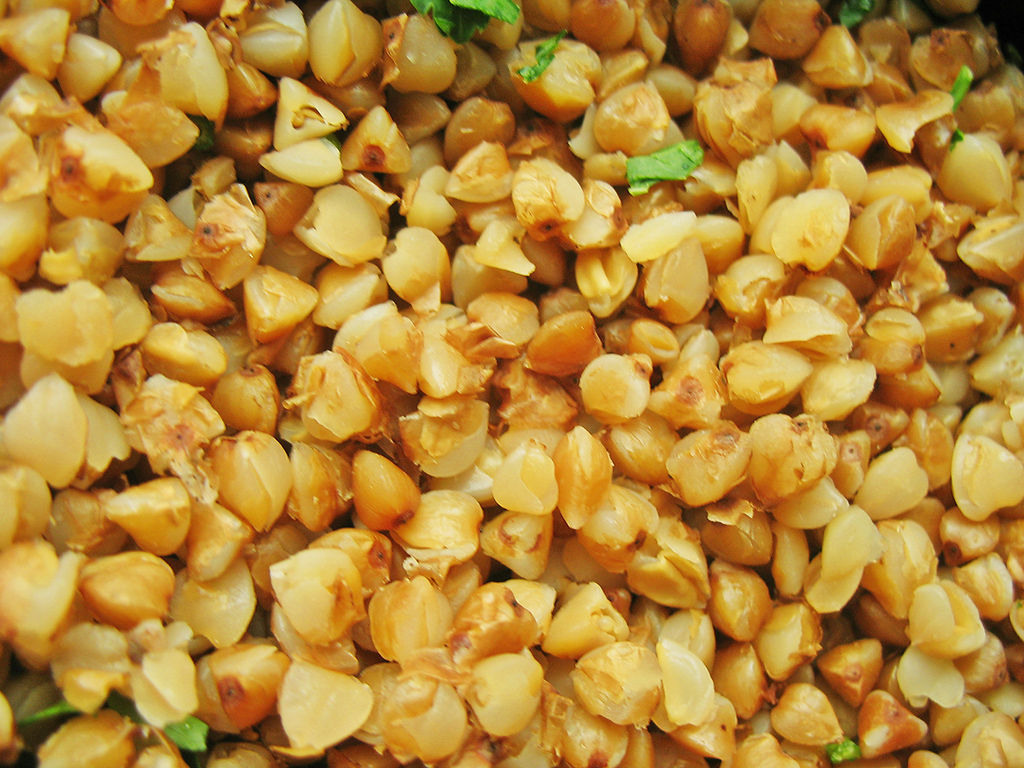Buckwheat is a cereal crop that includes 15 species. Its homeland is Nepal and Northern India, from where it has spread to different continents. In our country, buckwheat seeds are used to produce buckwheat, the advantages of which are high taste and dietary properties. With their help, buckwheat straw is also obtained, which is mixed with the straw of other grain crops. However, in order to achieve a high yield of healthy and nutritious buckwheat, you need to know how to properly grow, collect, store and process it.
Technology for growing buckwheat
To harvest a good buckwheat harvest, you need to understand how to properly include it in crop rotation. According to scientists and experienced farmers, it is better to sow it after legumes, row crops and winter crops. Among the best predecessors are sugar beets, corn, potatoes, vegetables, soybeans, vetch and perennial grasses.
Tillage
Soil preparation begins after collecting stubble precursors. It consists of stubble husking, which uses disc ploughs, and fall plowing, which uses plows and skimmers. On a thick arable layer, the plowing depth can reach 25-27 cm.
In arid regions and on erosive soils, flat-cut processing is used. At the same time, the land is cultivated with subsoilers-fertilizers, flat-cutting cultivators and subsoilers-subsoilers. To ensure that the soil is sufficiently moist at the time of sowing, it is recommended to till the fields with snow plows twice during the winter.
In addition, the soil is cultivated several times.First to a depth of 10-12 cm, then to 6-8 cm, and on the day of sowing – to the depth of seed placement.
Seed preparation
The prepared soil is sown with seeds with a diameter of 3.5 to 4 mm. They are pre-treated with fungicides, which prevent the development of fungal diseases.
Sowing
For sowing, choose the time when the soil temperature at a depth of 10 cm is stable at +10-12 degrees. In Polesie it falls in the second half of May, in forest-steppe regions – in the first half of May, in steppe regions – in the second half of April.
Sowing is carried out in one of two ways:
- ordinary method, in which grain seeders are used;
- wide-row method, in which beet seeders are used and care is taken to ensure that the width between the rows is at least 45 cm.
The seed consumption rate for this agricultural crop ranges from 2.5 (for the steppe zone) to 5 million (for the forest-steppe zone) per 1 ha. If the soil is wet and heavy, the depth of their placement does not exceed 4-5 cm, if it is light and very dry – 6-7 cm.
Seed care
To obtain uniform seedlings throughout the field, it is advisable to roll the soil after sowing using ring-spur rollers. At the same time, harrowing is carried out, which helps fight weeds and destroy soil crust. It is repeated as soon as the first true leaves appear on the stems.
A mandatory stage of caring for buckwheat crops is bee pollination. In this case, the calculation is based on 2 bee colonies per 1 hectare of field. Insects must be imported before flowering begins (about 2-3 days).
Harvesting buckwheat
Buckwheat is harvested mainly using the separate method, since it is characterized by a long ripening period (25-35 days). In this case, one plant can have both ripe and green fruits, as well as buds and flowers. If the air is humid and hot, the ripening period is extended. If air humidity, on the contrary, is low (less than 40%), the mass of grains stops increasing. At the same time, the stems and leaves can remain moist (50-65%). Ripening resumes only when weather conditions improve. Moreover, the fruits located on the lower tiers ripen first. They are the first to crumble.Before harvesting, wait until the windrows are completely dry and the moisture content of the leaves and stems is reduced to 30-35%. The grain moisture content should be no more than 16%. Under such conditions, you can begin threshing, in which the drum rotates at a speed of at least 500 rpm. From here the grain is supplied to the current for primary cleaning. If its humidity does not exceed 14%, mounds up to 1.5 m high can be formed for storage.
One of the popular methods for harvesting buckwheat is the two-phase method. When 70-75% of the fruits on the plant ripen, they begin to mow at the windrow.
If buckwheat is harvested using a combined method, then grain cleaning machines are used for cleaning. It is pre-dried. If the grains are not cleaned in time, this will cause self-heating.
Harvest storage
To preserve the properties of buckwheat, it is important that its moisture content is no more than 15%. To do this, cleaning is carried out using different equipment, conditionally dividing the process into three stages:
- preliminary
- primary
- secondary.
If the grain is intended for sowing, it is placed in fabric bags and stored in a dry and ventilated area. The bags are divided into groups of eight and laid out on separate pallets 2.5 m wide. The fruit crop can also be stored in the form of mounds more than 2.5 m high.
Processing buckwheat harvest
If buckwheat is grown for food, the grains are transported to cereal factories, where they are further processed. Hydrothermal treatment occupies a special place in this technological process. It includes:
- seed treatment with high pressure steam
- drying
- cooling.
During hydrothermal treatment, buckwheat grains are exposed to water vapor, so they eventually darken and acquire a characteristic dark brown color. High temperature triggers the process of protein hydrolysis, which results in the formation of essential acids.After their interaction with reducing sugars, the seeds acquire a dark brown color. Its saturation directly depends on the duration of treatment and steam pressure. Some consumers see a direct connection between the color of buckwheat and its nutritional value. However, the biological properties of the proteins included in its composition depend on the level of thermal exposure. If a harsh regime is used during processing, this threatens:
- decay and loss of vitamins;
- protein destruction;
- formation of an insoluble protein residue.
When buckwheat grains are exposed to water vapor, starch begins to gelatinize, resulting in the formation of dextrins. In large quantities, this intermediate product reduces the consumer and taste properties of buckwheat. Therefore, before hydrothermal treatment of seeds, the expected content of protein, starch and vitamins is taken into account. In addition to GTO, they are subjected to peeling, fractionation and separation of the final product.
The nutritional value and taste of buckwheat depend on the duration of cooking. According to GOST, buckwheat should be cooked for at least 20 and no more than 25 minutes.
Buckwheat is a fruit crop, the sowing and cultivation of which requires adherence to technological discipline. All stages of cultivation are equivalent to each other. Therefore, in order to get a high yield of buckwheat, it is necessary to comply with the entire agrotechnical complex.
4.Title: ᐉ Grain separator: characteristics and applications | articles from the OLIS company press center Description: ▷ Detailed article about the design and use of a grain separator ⭐ read interesting, useful news from the OLIS company press center.
Grain separator – features of the device and scope of application
During harvesting, the receiving part of the combine is filled with grains, stems, leaves, husks, organic and metal debris. The quality of the crop depends on its purity. To separate the final product from the waste, separation is carried out. It is started in the fields, and ends at the stage of preparing the crop for grinding and cleaning, during which seeds of other plants, mechanical waste, and organic impurities are removed. During separation, special equipment is used – separators, which are centrifugal, vibration and air. They allow you to separate grains based on their size, density, and aerodynamic parameters.
Stages of grain processing
As soon as the grain mixture enters the grain cleaning part of the combine, post-harvest cleaning and separation begin. This treatment allows you to remove chaff, straw, crushed and damaged grain from it. If the field is clean, then with the help of pre-adjusted combine harvester units, half of the organic waste can be removed in advance.
If the grain is very wet and heavily clogged, then preliminary cleaning is required, which removes large impurities (grains of other plants, spoiled grains, heaps, random objects) and significantly reduces the moisture content of the harvested crop. The latter helps ensure that the grain is heated evenly during drying and costs are reduced. Pre-cleaning also increases the shelf life of grain.
After preliminary cleaning, primary cleaning is carried out. It can be the first stage if the grain does not need drying and the percentage of contamination in it is low. Thanks to primary purification, the main fraction of grain is brought to the basic norms of the standard.
Primary and secondary processing of grain is carried out on grain processing plants of cereal plants, which are equipped with compact mobile units. Nowadays, technology is used for this, which allows not only to separate impurities, but also to remove chipped, crushed, fungal or insect-damaged fractions.
Separation allows you to break the collected grain mass into groups. It is usually divided into:
- large specimens, which are then used for sowing or sent for further processing;
- small specimens used for feeding purposes;
- large waste;
- fine dust.
After separation into fractions, the product is sent to elevators and grain receiving complexes, where final processing is carried out using stationary machines.
Differences in the design of separators
To separate grains from impurities, simple and complex separators are used. The first machines are configured to separate the mixture into two fractions, the parameters of which can be set in advance. They work based on:
- air brooms
- trier cylinders
- channels for air injection
- lattice sheets.
If you connect several simple devices, you get a complex separator. Its task is to separate the grain mixture into more than three fractions, the characteristics of which are also set in advance. Depending on what mixtures the complex separator works with, it is equipped with a sequential, parallel or combined circuit.
Technical and operational parameters of the separator “LUCH” ZSO
| ZSO-35 | ZSO-50 | ZSO-75 | ZSO-100 | ZSO-150 | ZSO-200 | ZSO-300 | |
| Number of sieve drum sections, pcs. | 3 | 4 | 4 | 3 | 4 | 5 | 6 |
| Sieve drum diameter, mm | 600 | 600 | 900 | 1260 | 1260 | 1260 | 1900 |
| Power of electric motors, kW | 5.85 | 5.85 | 8.1 | 12.6 | 12.6 | 6,6 | 23.1 |
| Overall dimensions, mm | 3662х1056х2655 | 4402х1056х2655 | 5121х2594х4444 | 5618х3177х5237 | 6651х3177х5237 | 7693х3330х5332 | 8340х2670х5833 |
| Weight, kg | 1675 | 1925 | 3040 | 3740 | 4350 | 5760 | 6700 |
| Pre-treatment, t/h | 35 | 50 | 75 | 100 | 150 | 200 | 300 |
| Primary treatment, t/h | 15 | 30 | 50 | 50 | 100 | 150 | 200 |
| Secondary cleaning (sorting, calibration), t/h | 5 | 6.5 | 10 | 15 | 20 | 25 | 30 |
Protective magnetic separation
During harvesting, the receiving part of the combine is filled not only with agricultural crops, organic waste and foreign plants. It often contains metal shavings, scale, and parts that have fallen off machines. Conventional separators and purification plants do not provide the function of separating metal debris from the general mixture. This can be done using a special magnetic separator.
How does a magnetic separator work?
This installation consists of a metal body and a receiving hatch, which is located in the upper part and into which the product is directly supplied. Metal shavings and waste are separated from normal grains using drum, rod or plate electromagnets installed inside the housing.
Before starting separation, the operator sets the parameters of the magnetic field so that it completely covers the treated area. During the processing process, magnets “catch” metal chips and then send them to the waste compartment.
Trier
If the harvested crop contains short or, conversely, long fractions, then processing is carried out using a trier, or a screw separator. Types of triremes:
- Cylindrical. The design of cylindrical triers includes a moving cylinder. Its inner surface is perforated with recesses, the size of which is preset. When rotated, grains of the appropriate size fall into the recesses. Under the influence of centrifugal force, they are thrown first into the receiver of the screw conveyor, and from there – out.
- Disk.This unit is equipped with rotating cast iron discs with cells into which the grains fall.
When using any of these devices, separation reliability increases to 94-96%.
Air sieve separators
This equipment primarily takes into account the aerodynamic characteristics and size by which the grain mixture will be selected. It is equipped with inclined reciprocating gratings. An air flow circulates in it, which first forcibly cleans the grains and then delivers them to the grates. Moving along the grates, the product breaks down into separate groups, and then is again captured by the air flow and sent for final cleaning. Sometimes the design of air sieve equipment is supplemented with a magnetic separator.
The calibration of air devices is based on aerodynamic characteristics. With their help, the grain mass is separated from dry shells and dust. In this case, the grains are located in a vertical channel, where they are exposed to air jets.
The efficiency of air-type separators is affected by:
- flow rate
- maximum load
- the ability to distribute flow along the cross-section of the channel,
- number of available aerodynamic parameters.
One of the devices with the help of which the grain mass is separated from the seed material is the “LUCH” ZSO separator. When using it, high accuracy of seed selection from the air flow is achieved. It also has a divisibility option that allows you to select seeds based on their specific gravity. During the process, the grain mass is exposed to an air flow, which allows it to be calibrated directly in free fall.
Using an aerodynamic installation you can:
- prepare seeds
- clean clogged and wet grains,
- set settings for working with different crops.
There is equipment on sale with a productivity ranging from 3 to 300 t/hour. This makes it accessible to both large cereal processing plants and private farmers.
Separation of the grain mixture is a process that requires an integrated approach. In order to ultimately obtain a high-quality food product, you need to correctly build technological chains and use different types of machines.


